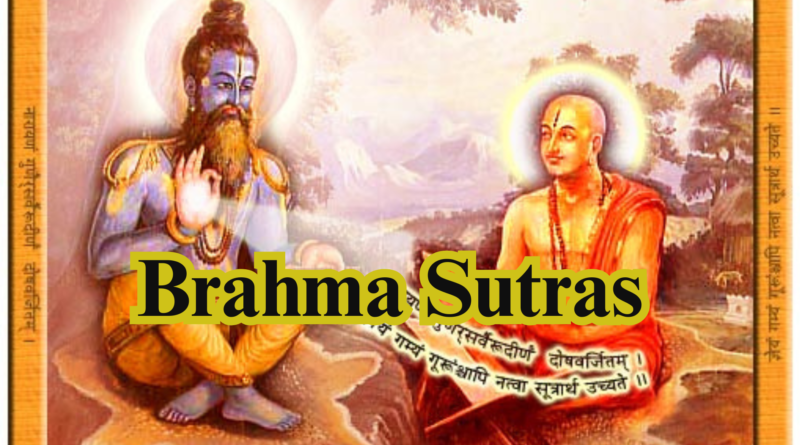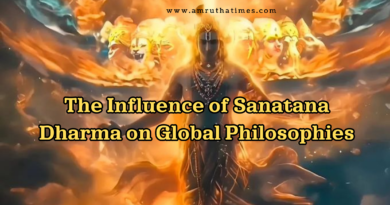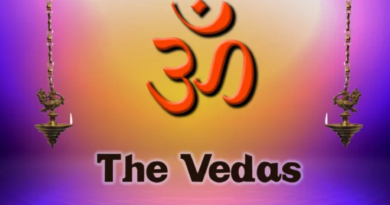Brahma Sutras
The Brahma Sutras, also known as the Vedanta Sutras, are one of the foundational texts of Vedanta philosophy in Hinduism. Composed by the sage Badarayana, they systematically compile and interpret the philosophical essence of the Upanishads, aiming to establish the nature of Brahman the ultimate reality and the path to liberation (moksha). The text consists of 555 aphoristic statements or sutras, divided into four chapters (adhyayas) and further subdivided into four sections (padas) each. These concise statements require detailed commentary for understanding, and over time, several major schools of Vedanta have interpreted them differently.
The first chapter, Samanvaya, deals with the harmony of the teachings in the Upanishads. It asserts that Brahman, the infinite, formless, and eternal reality, is the sole subject matter of all the Vedas. Through logical analysis and scriptural citations, Badarayana defends the view that Brahman is the source, sustainer, and end of the universe. He systematically dismisses alternate philosophical perspectives such as those of the Sankhya and Nyaya schools, establishing that the Self (Atman) and Brahman are ultimately identical.
The second chapter, Avirodha, addresses and refutes various objections raised against the Vedantic interpretation of the scriptures. This chapter is crucial for countering non-Vedantic schools and dualistic interpretations. It deals with issues like causality, perception, and the multiplicity of souls. By resolving contradictions, it reinforces the non-dual vision of reality and sets the stage for the practical implications of Vedantic philosophy.
The third chapter, Sadhana, focuses on the means to attain knowledge of Brahman. It discusses spiritual disciplines, such as ethical conduct, meditation, renunciation, and devotion, emphasizing the importance of self-inquiry (atma-vichara). This chapter also delves into karma (action), upasana (worship), and jnana (knowledge), indicating that liberation is achieved not through mere ritual action but through the deep realization of one’s unity with Brahman.
The fourth and final chapter, Phala, presents the fruit or result of self-realization liberation. It discusses the nature of the liberated soul and the state of moksha as being free from birth, death, and suffering. According to the Advaita school, once the individual realizes their true nature as Brahman, there is no return to the cycle of rebirth. Other schools like Vishishtadvaita and Dvaita interpret this liberation in terms of eternal bliss in the presence of a personal God.
What makes the Brahma Sutras unique is their openness to multiple interpretations, which has led to the formation of diverse Vedantic traditions. Adi Shankaracharya offered a non-dualistic (Advaita) reading, arguing for the oneness of Atman and Brahman. Ramanujacharya proposed qualified non-dualism (Vishishtadvaita), emphasizing a unity with distinctions, and Madhvacharya taught dualism (Dvaita), stressing the eternal difference between soul and God. Each of these interpretations led to rich theological traditions within Hinduism.
Despite its terse and abstract nature, the Brahma Sutras continue to be studied and revered by seekers of spiritual knowledge. The text encourages rigorous debate, philosophical clarity, and scriptural consistency. Commentaries and sub-commentaries by later thinkers have expanded its teachings, making it a central text not just for academicians but for spiritual aspirants seeking truth beyond ritualism and dogma.
The Brahma Sutras also symbolize a synthesis of reason and revelation. Unlike purely scriptural texts, they demand intellectual engagement. Logic (tarka), scriptural citation (shruti), and experience (anubhava) are the pillars upon which Vedanta is built. By weaving these elements together, the Brahma Sutras offer a rational and experiential path to understanding the metaphysical reality.
In conclusion, the Brahma Sutras serve as the intellectual and spiritual backbone of Hindu philosophy. Their enduring relevance lies in their ability to provoke thought, resolve doubts, and guide the aspirant toward a higher realization of self and reality. Whether approached through Advaita, Vishishtadvaita, or Dvaita lenses, the Sutras remain a timeless roadmap to the mystery and majesty of the Supreme Truth Brahman.




